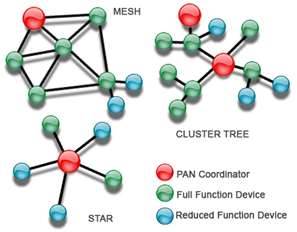Decoupling the hardware from the software reveals the heart of the matter: open platform IP video management software is the key to an optimal, flexible, cost-efficient and long-term system.
Decoupling the hardware from the software reveals the heart of the matter: open platform IP video management software is the key to an optimal, flexible, cost-efficient and long-term system.
One of the big drawbacks of the traditional surveillance world is the proprietary systems that have left so many customers with out-of-date surveillance technology. Choosing just a single DVR or NVR company would lead to limited product range for future expansions and integrations.
No one manufacturer alone is able to keep up with the pace of innovation across the full spectrum of security technology.
The best-of-breed open and independent video management software (VMS) assures users to be able to always add components or integrate other systems with new and better functionalities according to users' own choices. The total cost of ownership for a one-vendor product will always be higher than the cost of owning an open-platform solution in the long run.
Since the cost of the management software is no more than 10 percent from the estimated full cost of an IP video solution, investment in management software is cost-effective.
Short Lifespan of DVRs
The University at Buffalo has a widely distributed multi campus environment with varied security needs in different departments. A gradual switch from DVRs to VMS platform took place as they saw the benefits of this new system.
The school's food services alone are responsible for more than US$20 million annually. There are 300 vending machines, retail convenience stores, cafes and restaurants, as well as supply rooms for warehousing the goods. Both theft and vandalism can incur huge costs.
Security for the widespread locations was getting costly to manage with DVRs, as their limited lifespan created gaps in surveillance coverage when the hardware would fail on a regular basis.
"The average life of a standard DVR is no more than about 15,000 hours, which would be fine if you used it like a normal computer where the hard drive isn't on all the time. However, on DVRs, the hard drive is constantly in motion and racks up the hours very quickly," explained Keith Curtachio, Director of IT for the Faculty Student Association at the University at Buffalo in New York. Shipping the failed DVRs back to the manufacturer for repair would lose up to 30 days of data and important evidence because there is no recording redundancy.
With IP-based system, a deployment site can have centralized administration with decentralized access to the system, wide geographic distribution and Power over Ethernet hardware.
Moreover, the system is cost-efficient because both the equipment and network infrastructure use the standard IT resources. The IT department's expertise and maintenance routines can keep the system functions and expands it when it is necessary.
NVRs are not VMS
An NVR is an appliance, and a VMS solution is a non-appliance. What the NVR can do might be limited compared to VMS because the internal elements to the appliance have already been chosen by the people who designed and built it. Despite buyer intentions for an installation when buying an appliance, they are accepting a series of decisions made by the makers of that particular piece of hardware.
 The biggest complaint among end users about DVRs is the low mean time between equipment failures. Some NVRs basically are DVRs with digital VMS embedded in them, meaning they will have the same hardware limitations as a DVR at a comparable price.
The biggest complaint among end users about DVRs is the low mean time between equipment failures. Some NVRs basically are DVRs with digital VMS embedded in them, meaning they will have the same hardware limitations as a DVR at a comparable price.
An NVR solution that supports both analog and network cameras works fine initially because the system is running with a preconfigured functionality. However, as surveillance is moving to a more advanced state of technology across virtually every sector, many end users realize over time they need a system that is much more flexible both at the server and at the edge of cameras.
The goal is to get an optimal video solution with flexible options capable for future expansions. Only a true open-platform VMS with the best components integrating the latest technical improvements can keep up with the speed of innovation.
An open platform holds its relevance by decoupling the software from the hardware to allow free use of standard off-the-shelf hardware components.
One of the factors that make a digital video management system the ultimate choice is its ability to build the video system to the user's exact specifications and needs from the ground up and as things change. Users can select just the right mix of cameras, processors, RAM, storage and disk systems to deploy and sustain the optimal security system.
Flexibility Software with Analytics Interface
Network cameras are essentially a combination of camera and computer in one unit. They capture and transmit live images directly over a network, enabling authorized users to locally or remotely view, store, and manage video over standard IP-based network infrastructure and the Internet. The video surveillance management software you choose makes the hardware components into a cohesive and efficient surveillance system.
One example of adding valuable capabilities is by using open-platform IP video surveillance management software. Intelligent network cameras can be programmed through video analytics to recognize events such as a person entering the scene or a package being left unattended. Alerts will be triggered and sent over the Internet to a desktop computer, laptop, PDA or cell phone.
These alerting capabilities of IP VMS are particularly powerful that they can enable users to become more proactive when responding to situations.

User-Friendly Interface
An open-platform IP VMS solution provides a cohesive foundation, which seamlessly integrates video analytics tools from different manufacturers under a single, easy-to-manage interface. This gives users a powerful, future-proof framework for implementing and managing multiple video analytics applications.
Based on open VMS platform, the combination of advanced analytic tools and the optimized IP-based video technology minimizes the processing power required at the edge of cameras and at the server. It also adds value to the archived video.
With a powerful VMS platform, users can correlate events from generic tools such as license plate recognition, facial recognition and traditional real-time access control with alerts from video content analysis tools, such as object detection and so on. Users can also build strong, accurate evidence by cross-matching events in real-time and from archived video.